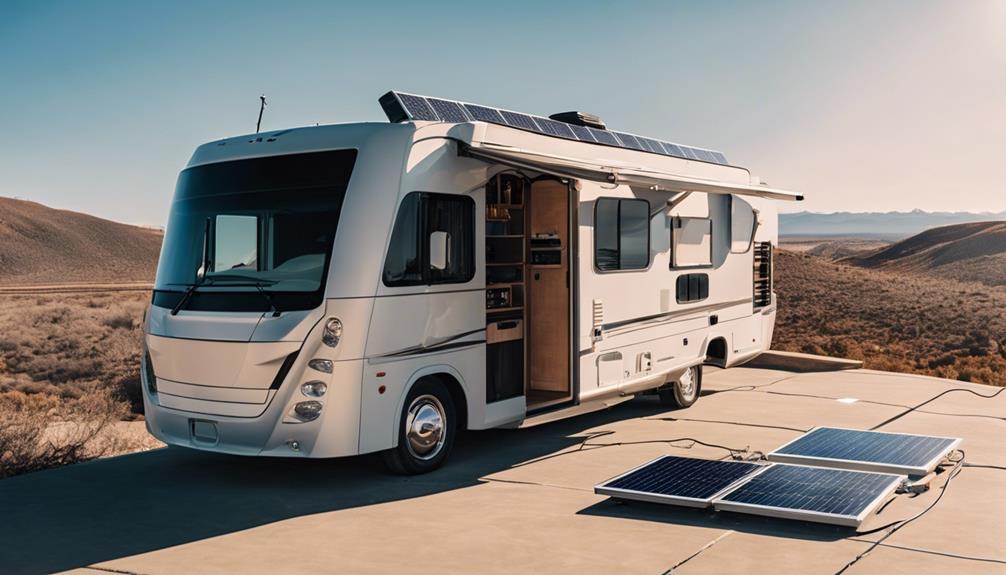
Solar energy is increasingly becoming a popular alternative to traditional energy sources. However, for those new to solar technology, the terminology can be a bit overwhelming. One of the key terms you’ll encounter when researching solar energy systems is “solar panel voltage.” In this comprehensive guide, we will delve into what solar panel voltage is, how it works, and its significance in solar energy systems.
The Basics of Solar Panel Voltage
Solar panel voltage refers to the electrical potential difference generated by solar panels when exposed to sunlight. This voltage is essential because it determines how efficiently solar panels can convert sunlight into electricity. Solar panels are typically made up of photovoltaic (PV) cells that absorb sunlight and convert it into direct current (DC) electricity. The voltage produced by these cells can vary based on several factors, including the type of panel, its size, and the intensity of sunlight it receives. Understanding solar panel voltage is crucial for optimizing the performance of a solar energy system.
How Solar Panel Voltage is Generated
The generation of solar panel voltage begins with the photovoltaic effect. When sunlight strikes the PV cells within a solar panel, it excites electrons, causing them to move and generate an electric current. Each PV cell produces a small amount of voltage, typically around 0.5 to 0.6 volts. When multiple cells are connected in series, their voltages add up, resulting in a higher total voltage output for the panel. For example, a standard 60-cell solar panel can produce around 18 to 22 volts under optimal conditions. Understanding this process can help you appreciate the science behind solar energy generation.
The Importance of Solar Panel Voltage in System Design
When designing a solar energy system, understanding solar panel voltage is essential for several reasons. First, it helps determine the compatibility of solar panels with other system components, such as inverters and batteries. Inverters convert the DC electricity generated by solar panels into alternating current (AC) electricity, which is used in most home appliances. The inverter must be compatible with the voltage output of the solar panels to function effectively. Additionally, battery storage systems must also match the panel voltage to ensure efficient energy storage and retrieval.
Factors Influencing Solar Panel Voltage
Several factors can influence the voltage output of solar panels, including temperature, shading, and panel orientation. For instance, solar panels tend to produce lower voltage outputs in high temperatures, as excessive heat can hinder the efficiency of the PV cells. Similarly, shading from trees, buildings, or even dirt can reduce the amount of sunlight reaching the panels, resulting in lower voltage generation. Proper panel orientation and tilt can also optimize voltage output, as positioning the panels to capture maximum sunlight will enhance their overall performance.
Understanding Series and Parallel Connections
When configuring solar panels in a solar energy system, you’ll often come across the terms “series” and “parallel” connections. In a series configuration, the voltage of each panel adds up, resulting in a higher total voltage. This configuration is often used when the system requires a higher voltage, such as when connecting to a grid-tied inverter. On the other hand, a parallel connection maintains the same voltage as a single panel while increasing the current output. This setup is ideal for systems with battery storage, as it allows for more energy to be stored without increasing the voltage, which could lead to system overloads.
Measuring Solar Panel Voltage
To ensure that your solar energy system is functioning efficiently, it’s crucial to regularly measure the solar panel voltage. This can be done using a multimeter, a tool that measures electrical current, voltage, and resistance. By connecting the multimeter to the solar panel output, you can determine if the voltage is within the expected range. Regular monitoring can help you identify any issues that may be affecting the panel’s performance, such as electrical faults or shading problems. Being proactive about measuring and maintaining solar panel voltage can significantly extend the lifespan of your solar energy system.
Common Myths About Solar Panel Voltage
There are several myths surrounding solar panel voltage that can lead to confusion for those new to solar technology. One common misconception is that higher voltage always means better performance. While it’s true that higher voltage can lead to more efficient energy transmission, it is not the only factor to consider. The overall efficiency of a solar panel system also depends on other aspects, such as the quality of the panels, the inverter efficiency, and the overall system design. Another myth is that solar panels will not generate voltage on cloudy days. While sunlight intensity does affect voltage output, solar panels can still produce electricity even in overcast conditions; they simply generate less than on sunny days.
The Future of Solar Panel Voltage Technology
As solar technology continues to evolve, advancements in solar panel voltage efficiency are on the horizon. Researchers are exploring new materials and designs for PV cells that can capture more sunlight and convert it into electricity more effectively. Innovations such as bifacial solar panels, which can absorb sunlight from both sides, and tandem solar cells, which combine different materials to maximize energy conversion, are promising developments. These advancements will not only improve solar panel voltage output but also contribute to the overall growth and adoption of renewable energy sources worldwide.
In conclusion, understanding solar panel voltage is fundamental for anyone looking to invest in solar energy. By grasping the basics of how solar panel voltage is generated, its importance in system design, and the factors that influence it, you can make informed decisions that enhance the efficiency and effectiveness of your solar energy system. As technology progresses, staying updated on innovations will help you maximize the benefits of solar energy and contribute to a more sustainable future.





